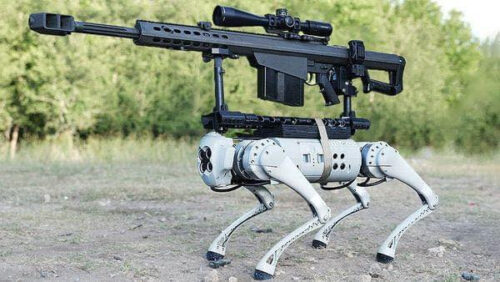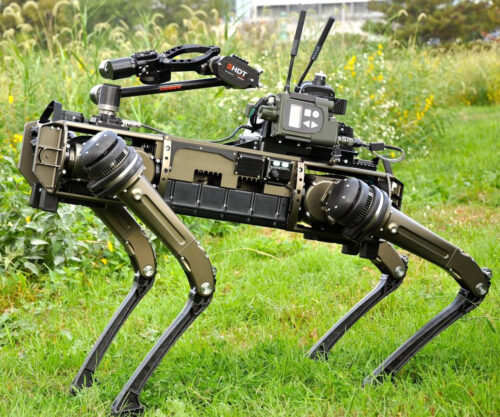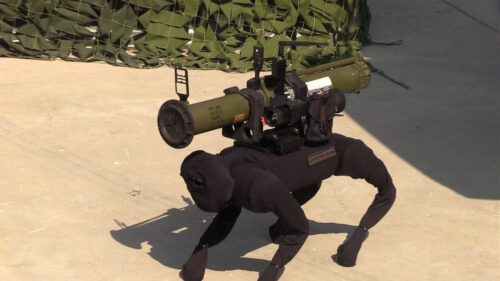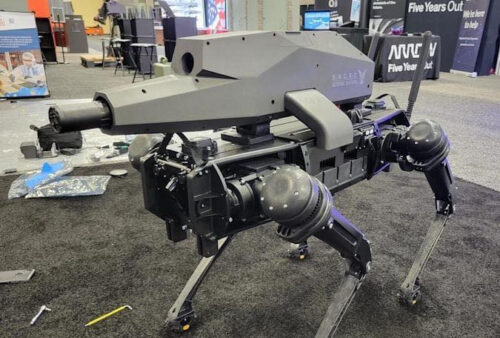
The introduction of a robotic dog armed with a sniper rifle has sparked widespread controversy and concern. Developed by Ghost Robotics and SWORD International, renowned providers of cutting-edge technology for military and security operations, this innovation takes the concept of robot dogs to new heights.
Unveiled at the United States Army Annual Expo, the quad-legged unmanned ground vehicle (UGV), named the Sniper Dog, features SWORD’s Special Ops Unmanned Rifle, a formidable 6.5mm robotic sniper rifle.
While some individuals find the idea of an armed robot dog intriguing, many others have expressed deep unease and apprehension about the implications of this development.

Social media platforms have been flooded with comments reflecting the dystopian nature of this advancement. One Twitter user sarcastically remarked, “So you’ve seen two Blade Runner movies, a Westworld show, and movies, 10 Terminator movies, and assorted gasp-inducing dystopias. This was a good idea? SMH, we’re doomed.”
Another user lamented, “Gross. I don’t want to live in this world. Will we survive this?”
Different from its predecessor, Spot, the popular robot dog developed by Boston Dynamics, it appears that the Sniper Dog is not a commercially available product. The combination of a robotic dog and a sniper rifle raises significant ethical and safety concerns that must be addressed before widespread adoption.

As the debate surrounding the potential consequences and dangers of autonomous weapon systems intensifies, it is essential for societies to establish clear regulations to ensure responsible development and deployment of robotics technologies. Striking a balance between innovation and the preservation of human values and safety becomes paramount.
The introduction of a robotic dog armed with a sniper rifle has ignited a heated debate about the implications of autonomous weapon systems.

While some people are intrigued by the concept, others express deep concern and apprehension. Society must navigate this technological advancement carefully by establishing comprehensive regulations that prioritize human values and safety.
VIDEO:
